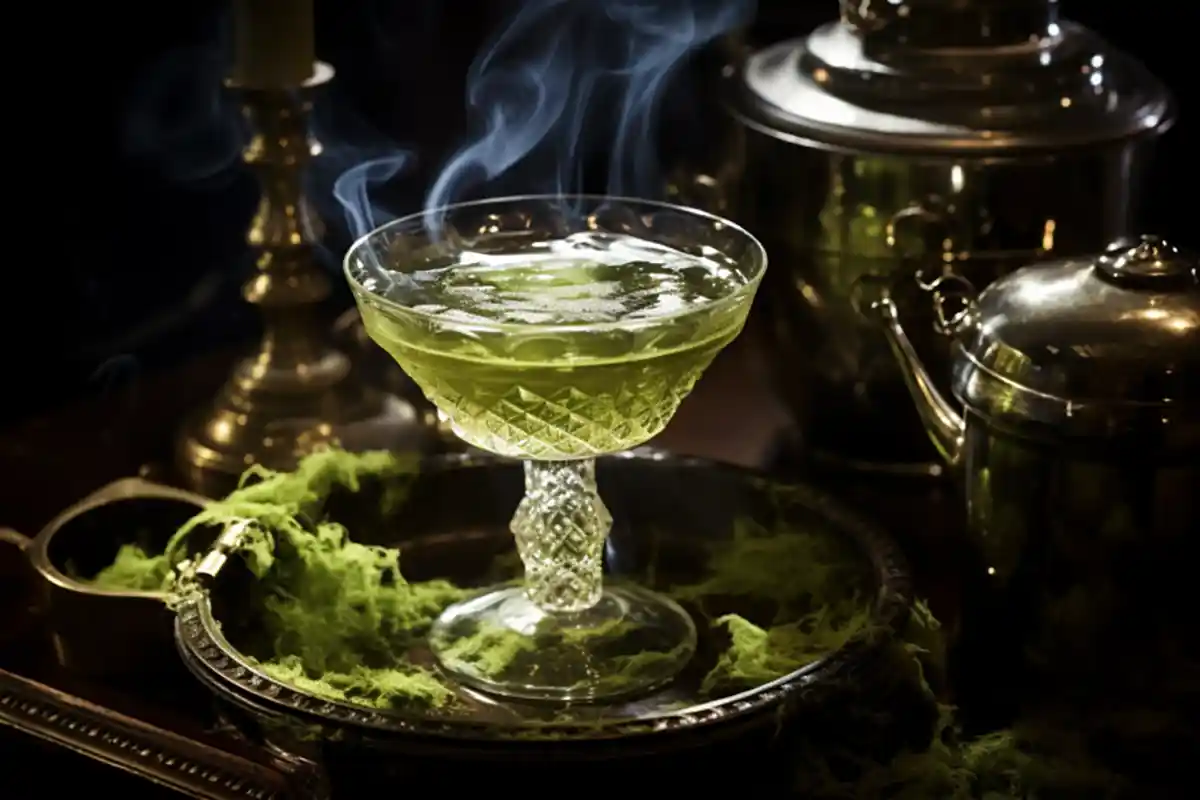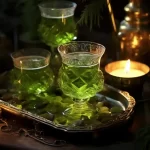Introduction
In the depths of history, there existed a time of shadows and secrecy, a time when the world was engulfed in the mystique of prohibition. This era, known as the Prohibition Era, marked a significant period in the annals of time, where the fervor to curb the consumption of alcohol ran rampant. Among the many libations that faced the wrath of the prohibitionists, one drink stood out, both in reputation and allure – absinthe. In this article, we delve into the intriguing tale of absinthe’s demise during the Prohibition Era, exploring its origins, its rise to infamy, and the reasons behind its eventual fall.
Origins of Absinthe: A Forbidden Elixir
Unearthing the Green Fairy
As the dawn of the 18th century cast its gentle glow upon the world, absinthe emerged from the shadows, captivating the hearts and minds of those seeking solace and inspiration in a glass. Born in the picturesque landscapes of Switzerland, this emerald elixir was concocted by a visionary French doctor, Pierre Ordinaire, who believed it held medicinal properties.
The Alluring Alchemy
Absinthe owes its unique allure to the meticulous blending of botanicals, the most notable being Artemisia absinthium, also known as wormwood. It is the wormwood that lends absinthe its mesmerizing green hue and its enchanting herbal notes. Coupled with anise, fennel, and a myriad of other herbs, absinthe became a drink that tantalized the senses and ignited the imagination.
Rise to Infamy: The Green Hour
The Bohemian Enclaves
As the 19th century unfurled its wings, absinthe gained popularity, especially among the bohemian circles of Paris. Artists, writers, and thinkers flocked to the green fairy, reveling in its perceived ability to unlock their creative spirits. The Green Hour, as it came to be known, became a ritualistic celebration of art, culture, and the allure of the forbidden.
Accusations and Hysteria
However, absinthe’s rise to prominence was not without its share of controversy. Accusations of madness, hallucinations, and even violent crimes were linked to the consumption of this emerald elixir. Sensationalized stories and misguided beliefs spread like wildfire, fueling the flames of prohibitionists, who sought to extinguish the green fairy’s light.
The Demise of Absinthe
Prohibition Takes Hold
As the Prohibition Era swept across the globe like a tempestuous storm, the prohibitionists set their sights on absinthe. In 1915, the United States banned the production, importation, and sale of absinthe, dealing a severe blow to its flourishing market. Other countries followed suit, succumbing to the rising tide of temperance.
Scientific Fallacies and Resurgence
However, the ban on absinthe was not solely fueled by evidence-based reasoning. Scientific fallacies surrounding the presence of thujone, a compound found in wormwood, were exaggerated, further stigmatizing the green fairy. It was not until the late 20th century that these fallacies were debunked, and absinthe experienced a revival, albeit in a modified form.
Conclusion
In the annals of history, the Prohibition Era will forever be etched as a tumultuous chapter, where the allure of absinthe met its demise. This emerald elixir, once celebrated for its enchanting qualities, succumbed to the fear and misconceptions of its time. Yet, like a phoenix rising from the ashes, absinthe has found its place in the modern world, a testament to the enduring spirit of a forbidden libation.
FAQs
Q1: What is absinthe?
Absinthe is an alcoholic beverage made from botanicals, including wormwood, anise, and fennel. It is known for its green color and herbal flavors.
Q2: Why was absinthe banned during the Prohibition Era?
Absinthe was banned due to exaggerated claims of its harmful effects, including madness and hallucinations. These claims were later debunked.
Q3: Can absinthe be consumed today?
Yes, absinthe can be consumed today. However, the production and sale of absinthe are regulated, and modern absinthe formulations do not contain the high levels of thujone that were believed to be problematic.
Q4: What is the Green Hour?
The Green Hour was a term used to describe the ritualistic consumption of absinthe during the 19th century. It was associated with artistic and bohemian circles.
Q5: Where can I get absinthe?
Absinthe can be purchased from specialty liquor stores and online retailers. However, it is important to ensure that you are buying from reputable sources.



